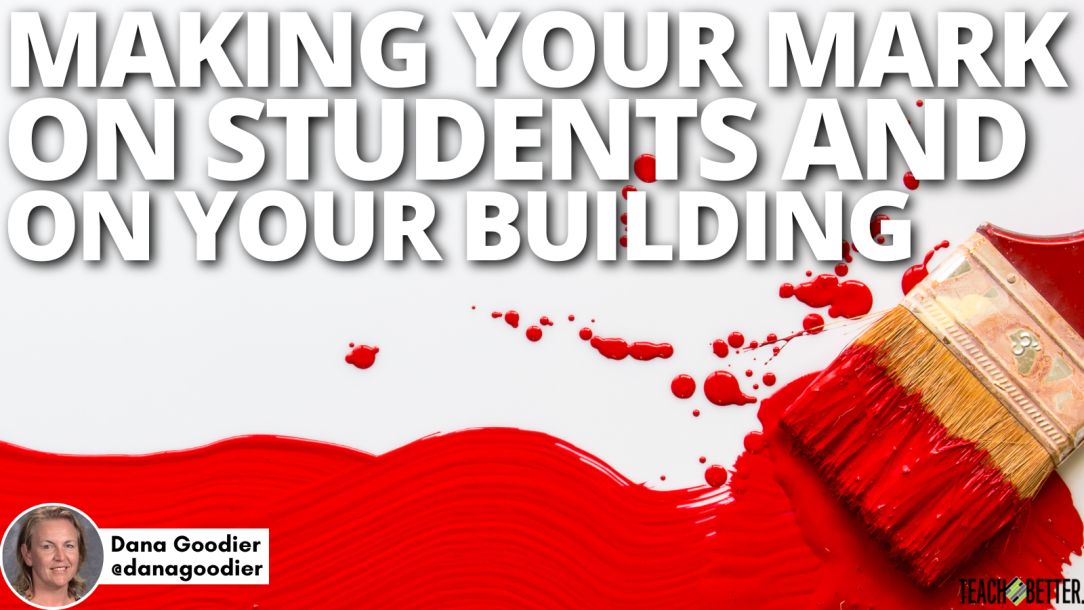TL;DR:
- Bring inspiration into your classroom to have a positive school year.
- Build strong positive relationships and guide students to have positive relationships with others.
- Find ways to contribute to your school and community.
As we start the 22-23 school year, we’re all looking for new and innovative ways to make our marks on students, our building, and/or our community. Whether you’re starting a position in a new school or staying where you’ve worked for several years, the new year is a chance to reconnect with students, colleagues, and your community.
Finding Inspiration in Everyday Places
Where did you find inspiration this summer? Was it travel, walks in nature, or professional development you attended? Maybe it was volunteering or spending time with family. What are ways you can bring that inspiration into your work with students this first month of school? What are some ideas you’d like to try this year that you didn’t get a chance to do last year?
How do you greet students as they arrive to your building or classroom? Now that smiles aren’t disguised by masks, wide smiles are encouraged! Do you do any special handshakes as your students go into the classroom?
Be Proactive, Not Reactive in Building Relationships
Remember to use proactive strategies to engage students and build relationships as we start the year, not reactive strategies!
Remember the phrase: “Kids don’t care how much you know, until they know how much you care.” Madeline Hunter, an educator who was influential in educational reform in the 1990s, is credited with saying this. It doesn’t matter how great your school is, it’s the relationships being built in and outside the classroom that are the cornerstone of building a positive classroom environment!
It doesn’t matter how great your school is, it’s the relationships being built in and outside the classroom that are the cornerstone of building a positive classroom environment! Click To TweetHow to Build Empathy in Our Students
Building empathy skills in our students as we start off is equally important. Michelle Borba’s book Unselfie lists ways we can guide our students to be kind and use empathy with their peers:
- Encourage small acts of kindness to counteract bullying like sharing their lunch, saying hello, and smiling.
- Expand kids’ comfort zone so they make friends outside their social sphere.
- Help kids identify their support and safety nets; “If you had a problem who would you turn to?”
- Teach peacebuilding. “What would a peaceable home, class, school, neighborhood where everyone gets along and helps each other look and sound like?”
- Hold class meetings to practice speaking out, respecting differences, decision making, and listening actively (Borba, 2016).
Connections with Colleagues
You want to also make a positive mark on your building and colleagues. If you’re new to your building, make an effort to show up to events like happy hours or other outside-the-school social events. Be active in PLC discussions. Use your problem-solving skills to contribute to helping solve situations that may arise with students or others in your school. Offer to help other staff members within your team, or elsewhere in the building, especially in times of staff shortage.
[scroll down to keep reading]Community Impact
You can make a positive mark on your colleague and the community around you (parents/guardians and stakeholders who frequent your building). Volunteer to mentor some students who are in need of positive adult role models. Connect with local businesses by having them sponsor sports and clubs at your school. Help arrange a food bank and/or clothing drive for families in need in your community.
As you have read, there are so many opportunities to get out of your comfort zone to connect with your greater community. If you have ideas that haven’t been mentioned here, please DM me on Twitter @danagoodier, and be sure to retweet this article with your comments and ideas!
Source: http://micheleborba.com/45-tips-to-teach-kids-to-stop-peer-cruelty/
About Dana Goodier
Dr. Dana Goodier has 20 years of experience in education. She has taught World Languages and English and worked as a middle school administrator. She completed her doctorate degree (Ed.D.) in Educational Leadership early 2020. For her dissertation, she researched reasons parents were opting their students out of high-stakes testing at middle schools and how that affected the district accreditation rating. She often speaks at conferences, providing educators with techniques to minimize off-task behavior and to increase time on task. She is the host of the “Out of the Trenches” podcast, which features educators who share their stories of resiliency. Follow her on Twitter @danagoodier and visit her website at: www.danagoodier.com




